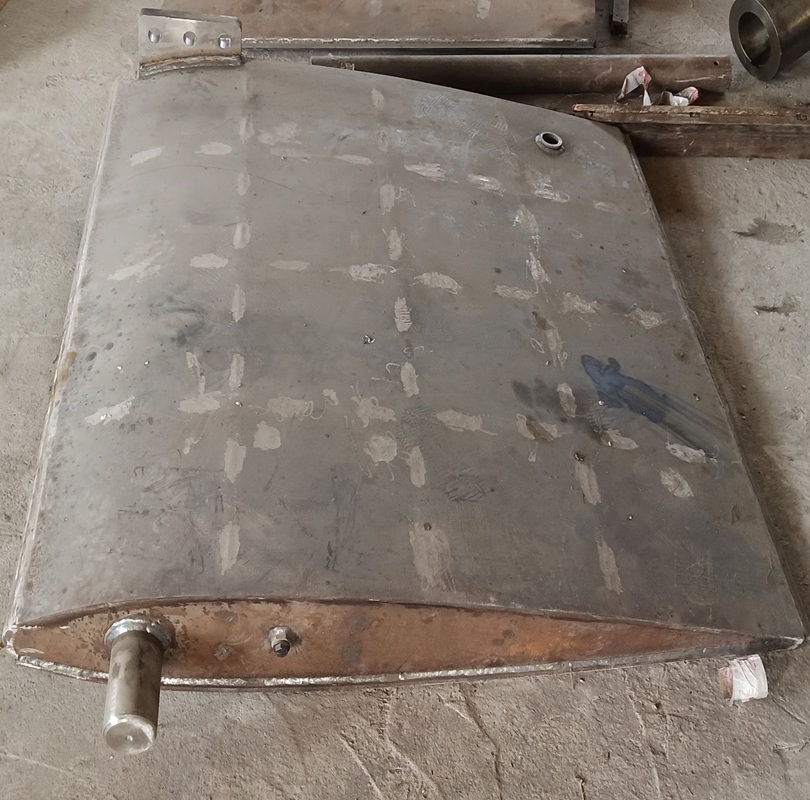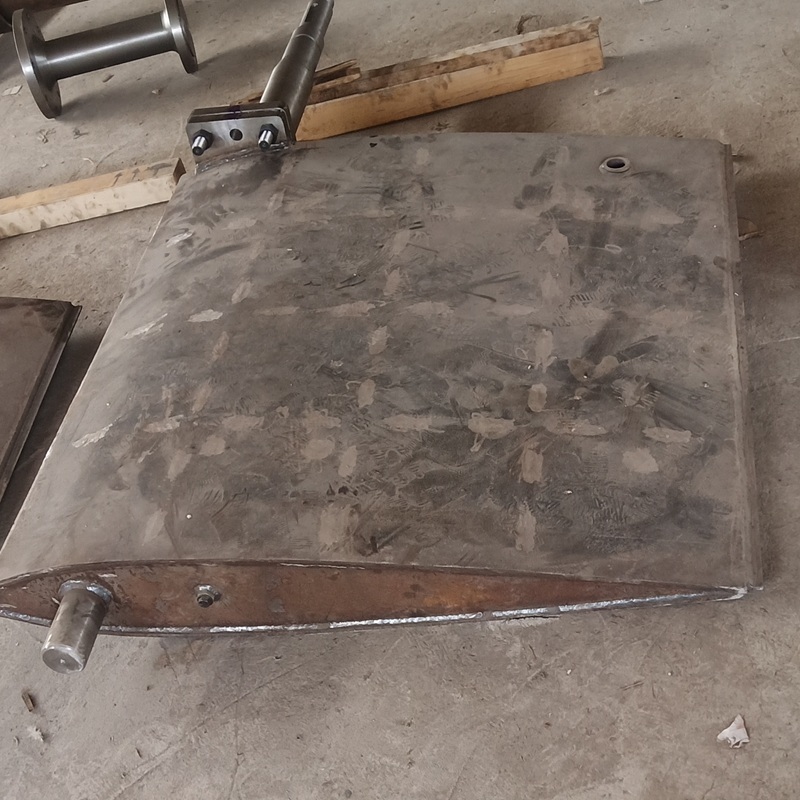How Stainless Steel Propellers Enhance Fuel Efficiency in Shipping
Release Time:
Jun 08,2025
How Stainless Steel Propellers Enhance Fuel Efficiency in Shipping Table of Contents 1. Introduction to Fuel Efficiency in Shipping 2. The Importance of Propeller Design in Maritime Operations 3. Advantages of Stainless Steel Propellers 3.1 Durability and Strength 3.2 Corrosion Resistance 3.3 Performance and Efficiency 4. How Stainless Steel Propellers Impro
How Stainless Steel Propellers Enhance Fuel Efficiency in Shipping
Table of Contents
- 1. Introduction to Fuel Efficiency in Shipping
- 2. The Importance of Propeller Design in Maritime Operations
- 3. Advantages of Stainless Steel Propellers
- 4. How Stainless Steel Propellers Improve Fuel Efficiency
- 4.1 Hydrodynamic Properties
- 4.2 Reduced Drag and Enhanced Thrust
- 4.3 Optimized Design for Various Vessels
- 5. Case Studies: Success Stories of Stainless Steel Propellers in Action
- 6. Best Practices for Selecting Stainless Steel Propellers
- 7. Future Trends in Propeller Technology and Fuel Efficiency
- 8. Frequently Asked Questions
- 9. Conclusion
1. Introduction to Fuel Efficiency in Shipping
In the shipping industry, fuel efficiency is not just a financial concern; it significantly impacts environmental sustainability. As global regulations tighten around emissions and fuel consumption, shipping companies are compelled to seek innovative solutions to enhance fuel efficiency. This article explores how **stainless steel propellers** can play a pivotal role in improving fuel efficiency, ensuring that vessels operate not only effectively but also economically and sustainably.
2. The Importance of Propeller Design in Maritime Operations
Propeller design is a critical aspect of any vessel's performance. The efficiency of a propeller directly influences fuel consumption, speed, and overall operational costs. **A well-designed propeller** can enhance thrust while minimizing resistance, thus improving fuel economy. As we delve deeper into the characteristics of stainless steel propellers, we will uncover how their design intricacies contribute to better maritime performance.
3. Advantages of Stainless Steel Propellers
Stainless steel propellers are increasingly favored in the shipping industry due to several compelling advantages. These benefits extend beyond just fuel efficiency; they encompass durability, performance, and long-term cost savings.
3.1 Durability and Strength
One of the standout features of stainless steel propellers is their **durability**. Unlike aluminum or plastic alternatives, stainless steel offers superior strength and longevity. This durability translates into fewer replacements and reduced maintenance costs over time. For shipping companies, investing in stainless steel propellers can lead to significant reductions in downtime and operational inefficiencies.
3.2 Corrosion Resistance
Corrosion is a major challenge in maritime operations due to the constant exposure to saltwater. Stainless steel propellers are designed to resist corrosion effectively, thanks to their unique alloy composition. This resistance not only extends the lifespan of the propeller but also ensures consistent performance over time. By minimizing corrosion-related issues, companies can maintain optimal fuel efficiency and vessel performance.
3.3 Performance and Efficiency
In terms of performance, stainless steel propellers provide excellent thrust and acceleration, enabling vessels to achieve higher speeds with less energy. The efficiency of these propellers contributes to reduced fuel consumption, which is essential for maintaining competitive operational costs in the shipping industry. By utilizing advanced manufacturing techniques, stainless steel propellers can be tailored to fit specific vessels, optimizing their performance.
4. How Stainless Steel Propellers Improve Fuel Efficiency
The relationship between propeller material and fuel efficiency is intricate. Stainless steel propellers enhance fuel efficiency through various mechanisms that capitalize on their physical properties and design.
4.1 Hydrodynamic Properties
The hydrodynamic properties of stainless steel propellers are crucial in reducing fuel consumption. The shape and design of these propellers are engineered to minimize turbulence, allowing for smoother water flow. This reduction in turbulence directly correlates to decreased drag, which means that vessels require less power to maintain speed, thereby optimizing fuel usage.
4.2 Reduced Drag and Enhanced Thrust
Lower drag results in enhanced thrust capabilities. Stainless steel propellers are designed to cut through water efficiently, generating greater thrust with less energy input. This efficiency reduces the overall power needed from the engine, which not only saves fuel but also extends the engine's lifespan. Achieving maximum thrust with minimal energy expenditure is a key factor in improving fuel efficiency.
4.3 Optimized Design for Various Vessels
Stainless steel propellers can be customized to meet the specific requirements of different types of vessels, ranging from cargo ships to luxury yachts. This **tailored design** ensures that each propeller operates at peak efficiency under various conditions. By optimizing the propeller design according to the vessel's unique operational parameters, shipping companies can realize further gains in fuel efficiency.
5. Case Studies: Success Stories of Stainless Steel Propellers in Action
The theoretical benefits of stainless steel propellers are supported by real-world applications. Several maritime companies that have transitioned to stainless steel propellers have reported significant improvements in fuel efficiency.
For instance, a mid-sized cargo shipping company implemented stainless steel propellers and noted a **15%** reduction in fuel costs within the first year. Similarly, a luxury yacht manufacturer found that equipping their vessels with stainless steel propellers improved performance while decreasing emissions, aligning with environmentally-conscious consumer preferences.
6. Best Practices for Selecting Stainless Steel Propellers
When selecting stainless steel propellers, it is essential to follow best practices to ensure optimal compatibility and performance. Here are several key considerations:
Understand Vessel Specifications
Before making a decision, thoroughly understand the specifications of your vessel, including size, weight, and operational requirements. This information is vital for selecting the right propeller size and design.
Consult with Experts
Engage with marine engineering professionals who can provide insights and recommendations based on your vessel's unique needs. Their expertise can guide you in selecting propellers that enhance performance while ensuring fuel efficiency.
Evaluate Performance Data
Look for performance data and case studies that highlight the effectiveness of specific stainless steel propellers. Real-world examples can provide valuable insights into potential fuel savings and operational efficiencies.
7. Future Trends in Propeller Technology and Fuel Efficiency
The shipping industry is evolving rapidly, with advancements in technology promising to further enhance the performance of stainless steel propellers. Emerging trends include:
Smart Propeller Systems
Innovations in sensor technology and data analytics are leading to the development of smart propeller systems that can adapt to changing conditions in real time. These systems can optimize thrust and reduce drag, yielding even greater fuel efficiency.
Hybrid and Electric Vessels
As hybrid and electric vessels gain traction, the demand for efficient propeller systems will increase. Stainless steel propellers, with their durability and efficiency, are likely to play a crucial role in the propulsion systems of tomorrow’s environmentally-friendly vessels.
8. Frequently Asked Questions
Q1: Why are stainless steel propellers more fuel-efficient than aluminum ones?
A1: Stainless steel propellers offer better hydrodynamic properties and durability, resulting in reduced drag and enhanced thrust, leading to improved fuel efficiency compared to aluminum propellers.
Q2: How do I know if my vessel needs a stainless steel propeller?
A2: If you are seeking improved performance, durability, and fuel efficiency, transitioning to a stainless steel propeller may be a beneficial option. Consult with a marine engineer for tailored advice.
Q3: What maintenance is required for stainless steel propellers?
A3: Regular inspections for corrosion and damage are essential. Routine cleaning and polishing can also help maintain optimal performance and appearance.
Q4: Are stainless steel propellers more expensive than other materials?
A4: While the initial investment in stainless steel propellers may be higher, the long-term savings in fuel efficiency and reduced maintenance costs often outweigh the upfront costs.
Q5: Can stainless steel propellers be customized for different vessels?
A5: Yes, stainless steel propellers can be tailored to meet the specific needs of various vessels, optimizing their performance and fuel efficiency.
9. Conclusion
Stainless steel propellers represent a significant advancement in maritime technology, offering numerous benefits that enhance fuel efficiency for shipping companies. Their durability, resistance to corrosion, and superior performance make them an ideal choice for vessels of all types. As the industry moves toward greater sustainability and cost efficiency, the adoption of stainless steel propellers is set to become increasingly paramount. By investing in these advanced propeller systems, shipping companies can not only save on fuel costs but also contribute to a more sustainable future for maritime operations.
Keywords:





